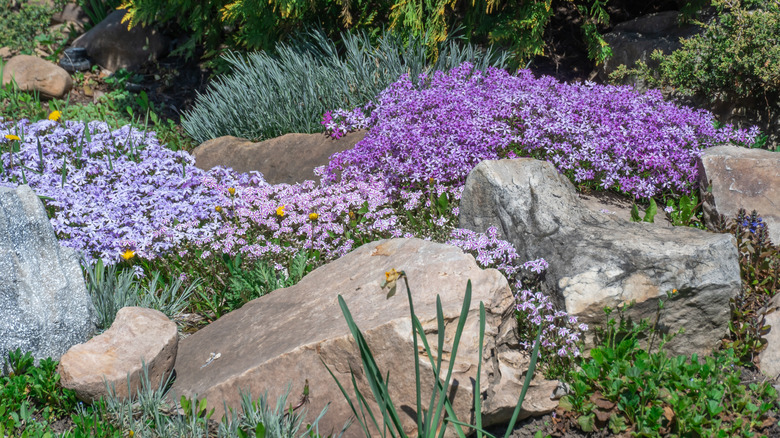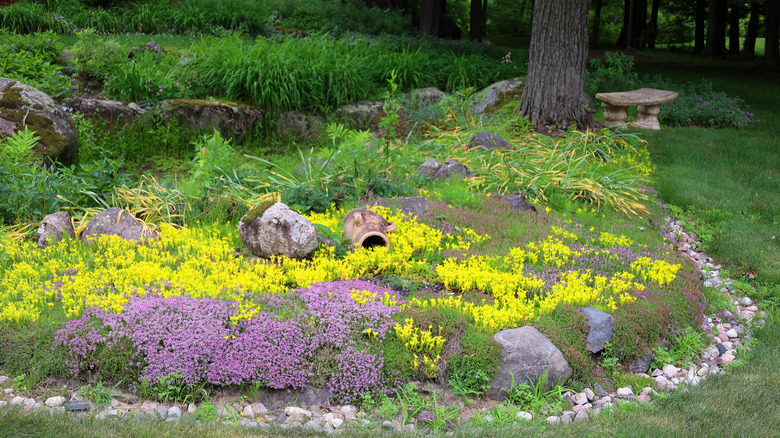Tips For Cutting Back And Getting Rid Of Creeping Phlox In The Fall
Creeping phlox (Phlox subulata) is a wonderfully versatile addition to the garden. This perennial serves equally well as a hardy ground cover that'll carpet your garden with stunning flowers, as well as a lush flowering plant that happily spills over stone edging or borders. Creeping phlox comes in white and a variety of pink and purple colors, and grows so densely it truly seems like a carpet, but the spread is slow. Hummingbirds and butterflies will flock to your yard for this colorful ground cover plant that grows just 6 inches tall and is spring-blooming.
Creeping phlox is not hard to grow, but it does require a bit of maintenance at the end of the flowering season — cutting it back to half of its height with garden shears. Some experts advise cutting it all the way back to the ground, using a mower on the highest height setting. Why cut it back? Cutting back your creeping phlox in the fall encourages denser growth and may also result in a second, though shorter, blooming period. A cutback can also help the ground cover maintain its shape.
Cutting back creeping phlox can help keep it healthy
Of course, everyone wants the lush ground cover and an extra bloom from their phlox. One of the most important reasons, though, to cut it back has to do with one of the hidden downsides of growing creeping phlox in your yard — its susceptibility to powdery mildew. A white, powdery substance coating the leaves signals that this disease is present on your phlox plants. Of the different species of creeping phlox, Phlox subulata is not nearly as susceptible to this fungus as is Phlox stolonifera. If your creeping phlox shows signs of powdery mildew, you'll want to cut and remove stems and leaves to reduce the spread of the disease. Use a fungicide to control any continued spread of powdery mildew.
Whether or not you find powdery mildew on your creeping phlox, cutting back can help prevent pest issues, as well. Cleaning out debris and dead leaves is also a good general gardening practice for fall. You will especially want to remove any foliage that looks infected with disease.

